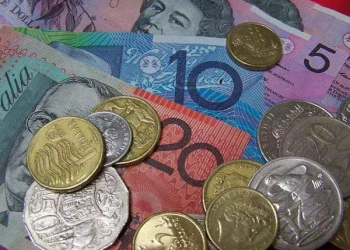The Australian Dollar (AUD) rebounded on Monday, recovering from previous session losses after China released its annual policy statement for 2025. The statement outlined plans to advance rural reforms and promote widespread rural revitalization, fueling optimism about economic stimulus measures in China—Australia’s largest trading partner.
China’s Property Market Shows Signs of Recovery
China’s state-backed developers are ramping up land purchases at premium prices following the government’s relaxation of home price restrictions aimed at stabilizing the struggling property sector. According to data from the China Index Academy, 37% of land sales in 2025 have closed at prices at least 20% above the asking price—compared to 14% in 2024 and just 4.6% in 2023.
US Investment Restrictions and RBA Rate Cut Influence AUD
The AUD/USD pair faced pressure after former US President Donald Trump signed a memorandum on Friday instructing the Committee on Foreign Investment in the United States (CFIUS) to restrict Chinese investments in strategic sectors. A White House official cited by Reuters stated that the move aims to balance foreign investment with national security concerns, particularly regarding potential risks posed by China.
Meanwhile, the Reserve Bank of Australia (RBA) reduced its Official Cash Rate (OCR) by 25 basis points to 4.10% last week—the first cut in four years. RBA Governor Michele Bullock acknowledged the impact of high interest rates but cautioned against premature expectations of further cuts, citing the labor market’s resilience and lingering inflation risks.
US Dollar Weakens Amid Disappointing Economic Data
The US Dollar Index (DXY), which tracks the USD against six major currencies, declined below 106.50, weighed down by lackluster US economic data.
Key economic indicators showed mixed results. The US Composite PMI fell to 50.4 in February from 52.7 in January, while the Manufacturing PMI edged up to 51.6 from 51.2, slightly beating forecasts. However, the Services PMI dropped to 49.7 from 52.9, missing expectations.
Additionally, US Initial Jobless Claims for the week ending February 14 rose to 219,000, surpassing the projected 215,000. Continuing Jobless Claims reached 1.869 million, slightly below the expected 1.87 million.
Federal Reserve Board Governor Adriana Kugler stated that inflation still has a way to go before reaching the central bank’s 2% target, while St. Louis Fed President Alberto Musalem warned of potential stagflation risks. Atlanta Fed President Raphael Bostic left open the possibility of two rate cuts in 2025, depending on economic conditions.
Trade Tensions and Australian Economic Data
Trump also indicated that a new trade deal with China is possible and mentioned an expected visit from Chinese President Xi Jinping. He confirmed his administration’s intent to impose a 25% tariff on lumber and forest products and reaffirmed existing 25% tariffs on auto imports. Additionally, tariffs on pharmaceutical and semiconductor imports are set to take effect in April.
On the domestic front, Australia’s economic data reflected modest growth. Judo Bank’s Manufacturing PMI increased to 50.6 in February from 50.2 in January, while the Services PMI improved to 51.4. The Composite PMI inched up to 51.2.
Meanwhile, Australia’s unemployment rate rose to 4.1% in January from 4.0% in December, in line with expectations. Employment Change came in at 44,000, down from a revised 60,000 in December but still surpassing the forecast of 20,000. RBA Deputy Governor Andrew Hauser noted that while the central bank’s policy remains restrictive, the latest labor data does not indicate significant concerns.
AUD/USD Technical Outlook
The AUD/USD pair traded near 0.6370 on Monday, maintaining an upward trajectory within an ascending channel. The 14-day Relative Strength Index (RSI) remained above 50, reinforcing bullish sentiment.
Key resistance levels include the psychological 0.6400 mark, with further upside potential toward 0.6430. On the downside, immediate support is found at the nine-day Exponential Moving Average (EMA) of 0.6347, followed by the 14-day EMA at 0.6330 and stronger support near 0.6320.
Related Topics:



























